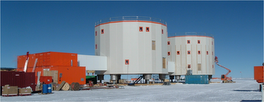Sunday seismometer #9
Galitzine (1910)
All the seismographs we have discussed up to now (Reuber-Paschwitz, Reuber-Ehlert, Wiechert horizontal and vertical, Mainka, Vicentini, 19-Ton, Mintrop) have been mechanical, with either mechanical or optical recording. Today's instruments, built by Galitzine in St Petersburg (Russia) in 1910, are the first examples of electromagnetic seismometers.

In the above photograph of the vertical Galitzine (mass 10 kg, period 24 s) you can see the new element of this seismometer: the coil placed at the end of the pendulum's rod. This coil oscillates in a magnetic field, and creates an electric induction current which can be measured using a galvanometer.
A copper plate, fixed on the same rod as the coil, oscillates in the field of a second magnet and provides damping via a Foucault current.

The horizontal instrument (above, mass 7 kg, period 12 s) works using the same principle. The object placed in front of the seismometer is a galvanometer that is equipped with a mobile frame and a mirror for optical recording.

The Galitzine instruments amplify Earth motion in two successive stages: an electromagnetic amplification (the galvanometer mirror rotates more than the pendulum oscillates) followed by the optical amplification caused by the distance between the galvanometer mirror and the recording medium.




No comments:
Post a Comment